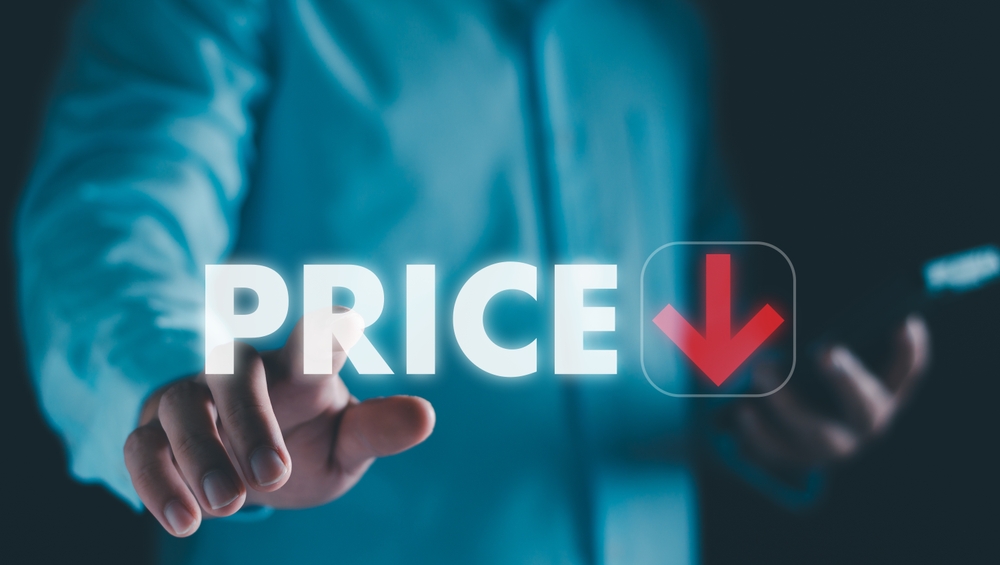
With the rise of online shopping, finding the best deals has become easier—but it can also be overwhelming to keep track of prices across multiple websites. Fortunately, price tracking tools can help you stay on top of price changes, ensuring you get the best deals without constantly monitoring various retailers. These tools can alert you to price drops, compare prices, and even offer insights into historical pricing trends. In this article, we’ll explore how price tracking tools work, the benefits of using them, and tips for making the most of these tools to save money.
What Are Price Tracking Tools?
Price tracking tools are digital platforms or browser extensions that monitor the prices of products across multiple online retailers. They track price changes over time and notify you when the price of an item drops, helping you make a purchase at the right time. Some tools can even predict future price trends based on historical data, giving you an idea of when it might be best to buy.
Popular price tracking tools include CamelCamelCamel, Honey, PriceBlink, and Keepa, among others. These tools often support a wide range of e-commerce sites, including Amazon, eBay, Walmart, and Best Buy, making them versatile for deal hunters.
Benefits of Using Price Tracking Tools
- Save Money
The most obvious benefit of using price tracking tools is the potential to save money. By tracking prices and alerting you to drops, these tools ensure that you don’t miss out on discounts or special offers. You can avoid the frustration of buying an item at full price only to see it go on sale a few days later. - Avoid Overpaying
Price tracking tools provide insights into historical price trends, helping you understand the typical price range for a product. This information can prevent you from overpaying during peak shopping seasons or during temporary price hikes. - Convenient and Time-Saving
Manually checking prices across multiple websites can be time-consuming. Price tracking tools automate this process, monitoring prices and sending alerts when a product you’re interested in drops in price. This saves you time and effort, allowing you to focus on other tasks. - Price Comparison Across Multiple Retailers
Some price tracking tools allow you to compare prices across different retailers in real time, ensuring that you’re getting the best deal available. This feature can be especially useful during sales events, such as Black Friday or Cyber Monday, when multiple retailers offer discounts on similar products.
How to Use Price Tracking Tools Effectively
- Choose the Right Price Tracking Tool
There are many price tracking tools available, each with its own features. When choosing a tool, consider which features are most important to you. For example:- CamelCamelCamel: Specializes in tracking Amazon prices, providing price history charts and alerts.
- Honey: A browser extension that not only tracks prices but also finds and applies coupon codes at checkout.
- Keepa: Offers price tracking and comparison across different Amazon marketplaces, as well as detailed price history graphs.
- PriceBlink: Compares prices across multiple retailers and alerts you if a cheaper option is available on another site.
- Set Price Drop Alerts
One of the most useful features of price tracking tools is the ability to set up alerts for price drops. Simply specify the product you’re interested in and set a target price. The tool will notify you when the price falls to your desired level, ensuring you never miss a deal. Be realistic with your target price to increase the chances of receiving timely alerts. - Use Price History Charts
Price history charts show how the price of a product has fluctuated over time. This feature can help you identify the best time to buy. For example, if you see that a product’s price typically drops during certain months, you can plan your purchase accordingly. Understanding price trends can also prevent you from buying during temporary spikes. - Compare Prices Before Buying
If you find a product on sale, use a price tracking tool to compare prices across different retailers. Sometimes, a deal that looks good on one site may be even better on another. Comparison features help you make informed decisions and ensure you’re getting the best price. - Use Browser Extensions for Convenience
Many price tracking tools offer browser extensions that automatically display price information when you shop online. For example, if you’re browsing Amazon, the extension might show the product’s price history or alert you if it’s available at a lower price on another site. This feature makes it easy to spot deals without leaving the website. - Leverage Mobile Apps for On-the-Go Shopping
If you prefer to shop on your smartphone, look for price tracking tools that offer mobile apps. These apps can provide the same features as their desktop counterparts, including price alerts, price history, and comparison shopping, making it easy to find deals even when you’re on the go.
Popular Price Tracking Tools to Try
- CamelCamelCamel
CamelCamelCamel is one of the most popular price tracking tools for Amazon. It offers detailed price history charts, price drop alerts, and a browser extension called “The Camelizer.” This tool helps users identify the best time to buy products on Amazon and is easy to use. - Honey
Honey is a versatile browser extension that automatically applies coupon codes at checkout and tracks prices for various online stores. It’s a great all-in-one tool for deal hunters looking to save on their purchases. Honey also has a “Droplist” feature that lets you add items and receive notifications when the price drops. - Keepa
Keepa is another Amazon-focused price tracking tool that offers more in-depth price data, including historical price charts and price comparisons across different Amazon marketplaces. Users can set up alerts and track price changes over time, making it easier to catch deals when they happen. - PriceBlink
PriceBlink is a browser extension that compares prices across multiple retailers. It automatically shows you if the product you’re viewing is available at a lower price elsewhere, helping you find the best deal. It also displays coupon codes that can save you even more money.
Tips for Smart Shopping with Price Tracking Tools
- Plan Ahead for Sales Events
Use price tracking tools to monitor prices leading up to major sales events like Black Friday, Prime Day, or holiday sales. This will help you determine whether the deals offered during these events are genuinely good or just marketing tactics. If a price has been stable or lower in the past, you’ll know if it’s worth buying during the sale. - Be Wary of False Discounts
Retailers sometimes inflate prices before offering a discount to make it look like a better deal than it really is. Price tracking tools can help you identify these “false discounts” by showing the product’s price history, so you can determine if the current sale is actually a good deal. - Watch for Seasonal Price Drops
Certain products, like electronics, clothing, and appliances, tend to go on sale at specific times of the year. Use price tracking tools to monitor these trends and make your purchases when prices are likely to be at their lowest.
Shop Smarter, Save More
Price tracking tools are essential for anyone who wants to save money and make informed shopping decisions. By automating the process of monitoring prices, setting up alerts, and providing historical data, these tools take the guesswork out of finding deals and help you avoid overpaying. Whether you’re a casual shopper or a deal-hunting pro, using price tracking tools can make your shopping experience more efficient, cost-effective, and satisfying.







